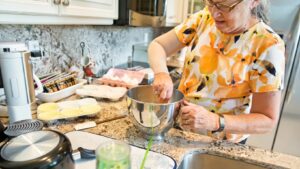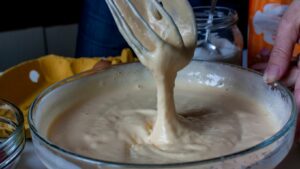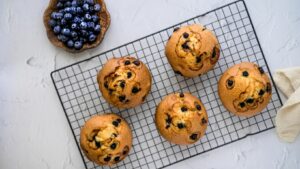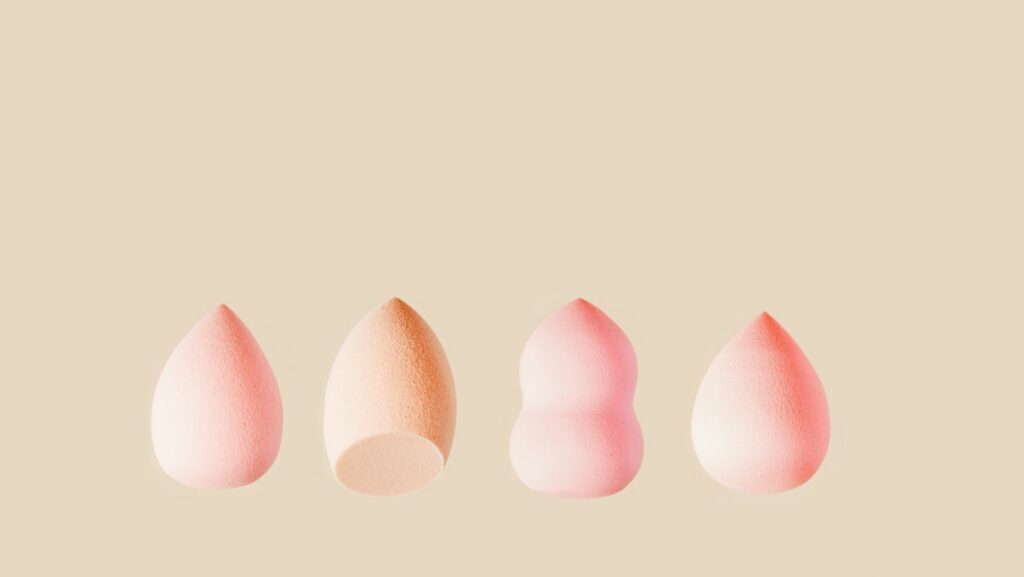Mastering the muffin mixing method can transform anyone into a baking pro, turning out moist, fluffy muffins every time. This technique is all about precision and knowing when to mix and when to let the ingredients rest. While it might seem simple, understanding the nuances can make a world of difference in the final product.
Whether you’re a seasoned baker or just starting, learning these techniques can elevate your muffin game. From selecting the right ingredients to mastering the mixing process, these insights will help you bake muffins that are not only delicious but also visually appealing. Dive into the world of muffin making and discover the secrets to perfect muffins every time.
What Are The 3 Tips, Tricks, And Techniques About Using The Muffin Mixing Method?
In the muffin mixing method, the goal is to create a batter that results in tender, fluffy muffins. This method involves separately mixing dry and wet ingredients before combining them. This approach prevents gluten development, which can lead to a dense texture.

Dry and Wet Ingredients
Dry components typically include flour, sugar, baking powder, and salt. Wet ingredients usually consist of milk, eggs, melted butter or oil, and flavorings like vanilla extract. Proper measurement is crucial to achieving the desired muffin texture.
Folding Technique
Instead of stirring, gently fold the wet and dry ingredients together until just combined. A few visible streaks of flour are acceptable. This technique minimizes gluten formation, contributing to a soft crumb.
Muffin Batter Consistency
The batter should be lumpy and slightly thick. Overmixing results in smooth batter, which usually indicates excess gluten development leading to dense muffins. Aim for a balanced moisture level to prevent muffins from being too dry or too wet.
Essential Tools for Muffin Mixing
Using the right tools ensures efficiency and consistency in the muffin mixing process. Proper equipment and ingredients contribute significantly to the overall quality of the muffins.
Must-Have Equipment

- Mixing Bowls: Stainless steel or glass bowls of varying sizes accommodate both wet and dry ingredients.
- Whisk and Spatula: A whisk blends dry ingredients like flour and sugar, while a rubber spatula is effective for folding wet and dry mixtures.
- Measuring Cups and Spoons: Accurate measurement of liquids and solids maintains the balance of ingredients.
- Muffin Pan: Non-stick pans help achieve uniform muffin size and golden brown crusts.
- Ice Cream Scoop: An ice cream scoop portions batter evenly into muffin cups, ensuring consistent muffin sizes.
- All-Purpose Flour: Versatile and suitable for most muffin recipes.
- Leavening Agents: Baking powder or baking soda provide the necessary rise and fluff.
- Sugars: Granulated sugar or brown sugar offers sweetness and moisture.
- Dairy: Milk or yogurt balances rich texture and flavor.
- Flavorings: Vanilla extract and spices like cinnamon enhance the muffin’s taste profile.
Tips for Perfect Muffin Mixing
Perfecting the muffin mixing method enhances texture and flavor. Key elements like avoiding overmixing and accurate measurement ensure delightful results.
Avoid Overmixing

Overmixing results in dense muffins, reducing quality. Maintaining a lumpy batter with visible flour streaks preserves softness and texture. Folding ingredients gently minimizes gluten development, ensuring a tender crumb. Achieving a light consistency requires careful integration of wet and dry components.
Measuring Ingredients Accurately
Accurate measurement impacts the muffins’ rise and taste. Using precise measuring cups and spoons avoids imbalance, ensuring correct proportions of flour, sugar, and leavening agents. Heaping or misjudging measurements affects the batter’s consistency and the final product’s texture. Consistency and accuracy in measurement contribute to achieving a uniform result across batches.
Mastering the muffin mixing method can transform anyone’s baking experience by delivering consistently fluffy and delicious results. By focusing on the separation and gentle folding of wet and dry ingredients, bakers can avoid the common pitfall of overmixing, which often leads to dense muffins. Essential tools and accurate measurements further enhance the process, ensuring each batch is as delightful as the last. Additionally, experimenting with flavors and textures opens up a world of possibilities, allowing bakers to personalize their creations. With these insights, anyone can confidently tackle muffin baking and achieve bakery-quality treats at home.



